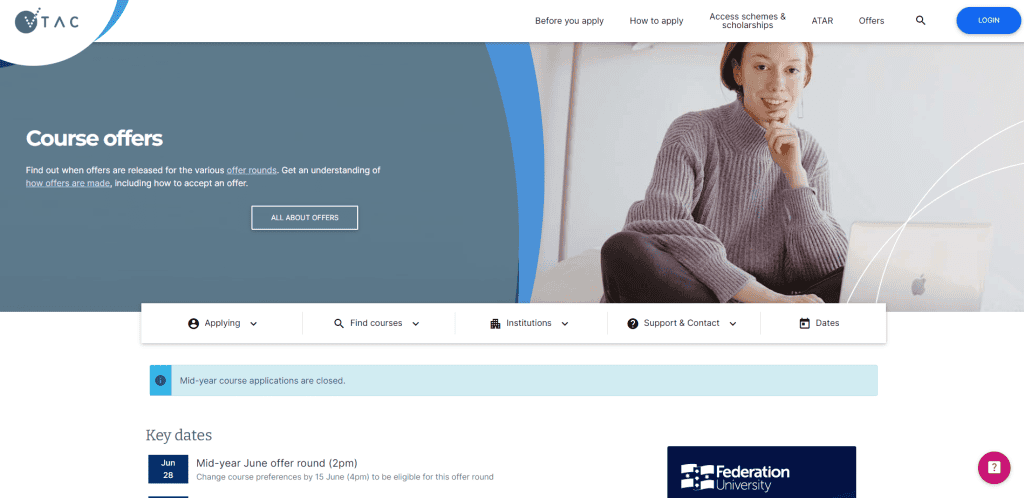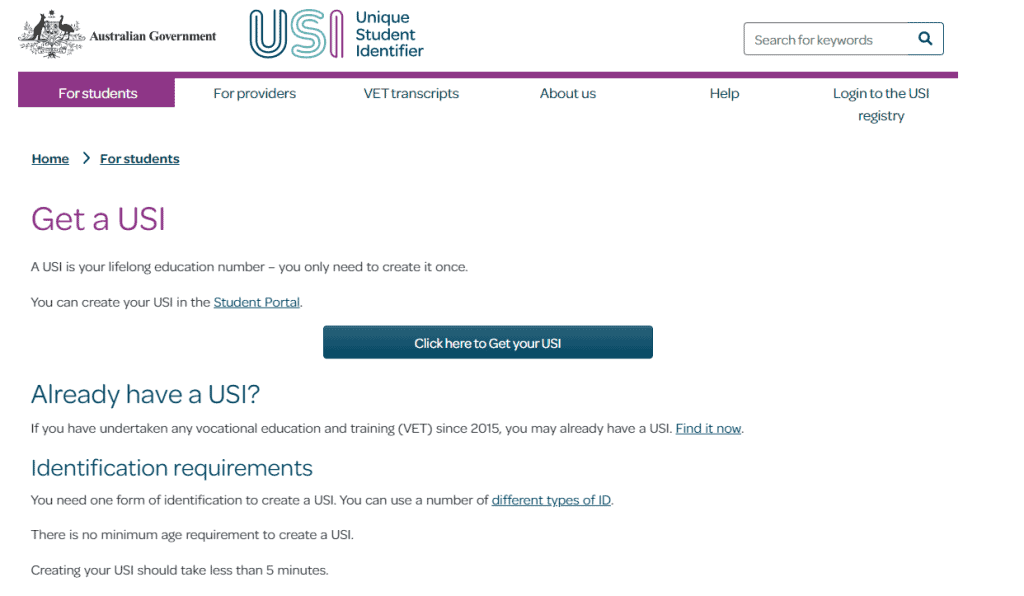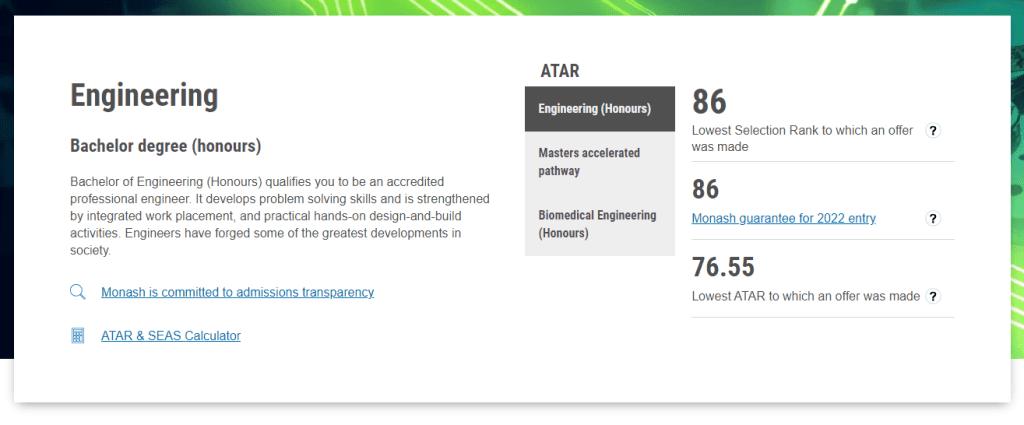Feeling confused about how to work through your VTAC application? Not sure how to order your preferences?
Don’t stress — we’ve got you covered! We’ll take you through the process of applying for university through VTAC, from signing up for your account through to choosing your preferences.
What are you waiting for? Let’s dive in!
What is VTAC?
How do you apply for university through VTAC?
How should you order your preferences on your VTAC application?
Changing Course Preferences
Important Dates and Fees for VTAC Applications
How do you respond to an offer?
Tips for Navigating Your VTAC Application for University
What is VTAC?
VTAC stands for Victorian Tertiary Admissions Centre — it is the central office that manages applications to most undergraduate and some postgraduate courses in Victoria.
Both school-leavers and mature age applicants can apply to courses through VTAC.
If you are thinking of applying to universities like Monash University, the University of Melbourne, RMIT, Deakin University, and many more, VTAC will be your go-to for university applications.
You can find the complete list of institutions you can apply for here.
How do you apply for university through VTAC?
Step 1: Organise USI
Before creating a VTAC account, make sure you have a Unique Student Identifier (USI). This is simply a number that links all your past education together.
If you don’t have one yet, you can get one here.
Step 2: Create Your Account
Make sure that all your details are entered correctly, and that you register with a personal email, as any school emails may be deactivated after you finish Year 12.
Step 3: Add in your education and experience
Make sure to include any relevant Year 12 studies — the application will inform you whether it can access these details automatically.
If you have any post-secondary studies or relevant experiences, make sure to include them here.
Step 4: List your course preferences
The last part is entering your course preferences — this is what you’ve been waiting for! Make sure to include a minimum of 4 preferences, although it is best to fill out all 8 just in case. Ensure that you fulfil all entry requirements for the courses you apply for, as otherwise the preference is wasted!
Note that if you are applying for a graduate-entry teaching course (such as Masters of Education), you will need to include two specialist areas on your application.
Learn about the top 10 most employable degrees in Australia!
How should your order your preferences on your VTAC application?
Before you even order your preferences, it’s important to know what kinds of courses are out there! For example, if you broadly search the term ‘Engineering’, these are just some of the results that will come up.
If there is one that piques your interest, you can add it to your course shortlist and review the course more thoroughly at a later time before finalising your preferences.
Now when it comes to ordering your preferences, there are a few things you should consider.
Early Entry
If you intend to apply for early entry, make sure to include these courses on your VTAC application, and prepare any recommendations or documentation required. Note that early entry is only available on some courses, so make sure to check before you apply!
Personal Preference
Your preferences should be ordered first based on which course you most want to study (obviously!). These preference lists are used to determine which offers you receive in each round, so make sure to give it some thought.
ATAR Requirements
Most of the time, a student’s ‘Dream Course’ will have the highest ATAR requirement. Make sure to include some other courses you would be interested in doing that have lower entry requirements, as these can serve as backups in the event that you don’t make it into your first preference.
Note that ATAR cut-offs for courses change year-to-year based on the volume of applicants.
Changing Course Preferences
Be aware that at any time before the cut off for change of preference (December 14th), you can add, remove or reorder the courses on your preference list.
Important Dates and Fees for VTAC Applications
- August 1st – 2023 Course, SEAS and scholarship applications open
- September 29th – 2023 Course applications close
- October 7th – SEAS and scholarship applications close
- December 12th – ATAR and VCE results released
- December 14th – Change of preference for December round closes
- December 21st – Offers for December round released
- January 13th 2023 – Offers for January round 1 released
When submitting your VTAC application, there will be a fee as listed below:
- Year 12 Applicant Fee: $44
- All Other Applicants Fee: $62
How do you respond to an offer?
VTAC makes offers in rounds: the first round in December is made for some courses, and all courses are required to make offers in the January round. If you receive an offer in the December round, and would like to be considered for further offers, you can reorder your preferences to move the offered course below others you would like to be considered for.
Accepting an Offer
To accept your offer you must enrol in the course, as per instructions that will be emailed to you. Note that in some cases you will be required to attend in person at a given place and time.
Deferring an Offer
Deferment is administered by universities, not by VTAC, and so you will need to contact the universities applications department. Note that not all courses can be deferred, and different universities will have different deferment dates.
Tips for Applying for University Through VTAC
#1: Some courses have an offer guarantee ATAR or selection rank
The guarantee for a course is the minimum ATAR to be guaranteed a spot in the course, while the selection rank is an adjusted ATAR that is used to determine entry into a particular course.
As demonstrated below for an Engineering degree at Monash, the guaranteed ATAR for entry was 86. The lowest selection rank was also 86, but this number took into consideration some adjustment factors.
Individual courses may have their own selection rank based on subjects scores, school location or SEAS. Note that these guaranteed ATAR change year on year, so make sure to check!
#2: You might be eligible for the SEAS
The Special Entry Application Scheme (SEAS) takes into account any circumstances that may have affected studies. This allows institutions to get a fuller picture of your potential.
If you intend to apply for SEAS, make sure to collect any relevant supporting documentation, as this will need to be submitted before October 7th.
#3: Consider Scholarships
Scholarships can be a great way to support yourself while studying. Make sure to check out the list of available scholarships and see if any fit you.
Most require supporting documentation, so make sure to have this ready and submit it before the cut off on October 7th.
Scott McColl is a content writer with Art of Smart and a Civil Engineering student at Monash University. In between working and studying, Scott enjoys playing music and working on programming projects.







